Trees Birds Mammals Fish Amphibians Reptiles
Wild Algarve
Bookshop
Lesser Purple Emperor Butterfly - Apatura ilia
Phylum: Arthropoda - Class: Insecta - Order: Lepidoptera - Family: Nymphalidae
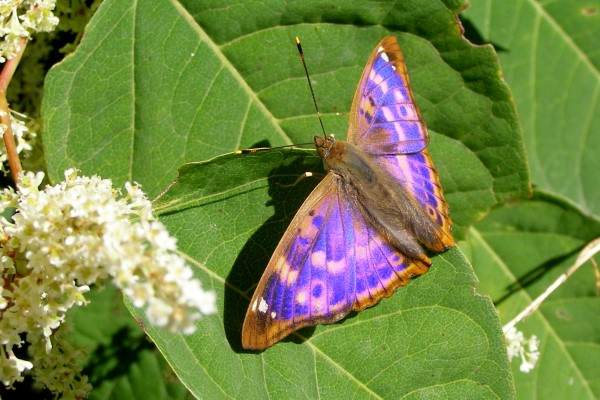
We saw our first Lesser Purple Emperor butterfly in northern Italy many years ago, and we are still waiting and hoping to come across a second specimen! These lovely butterflies, which come in two colour forms, are not a common sight, partly because of their shyness and habit of spending most of the day high up in trees; however, the males are attracted towards human perspiration, and sometimes they congregate to drink from moist animal dung.
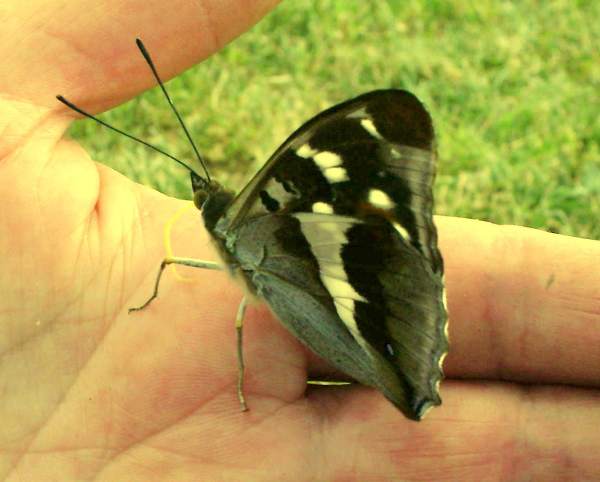
Above: Apatura ilia form ilia attracted to perspiration on a human hand.
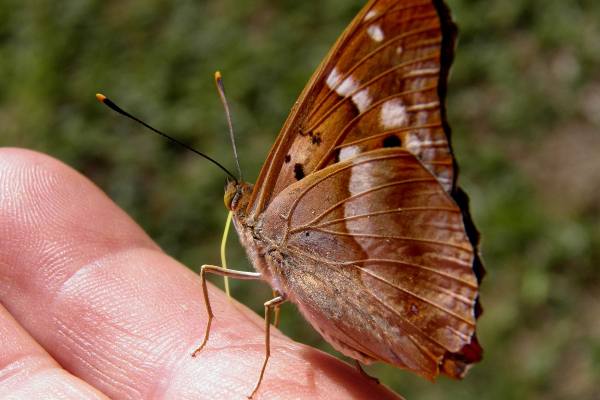
Above: Lesser Purple Emperor form clytie is also attracted to human perspiration.
Description
With a wingspan of 6.5 to 7.5cm, this beautiful butterfly and its close relative the Purple Emperor are able to display iridescent blue-purple hues, dependent on the directions of incident and reflected light. Unlike chemical pigments, the emperor's wings are studded with strongly reflecting iridescent scales that diffract light, and this results in a narrow-frequency-band reflected spectrum that is visible only in a narrow angular range.
The wings have either a black background (form ilia) or a dark brown background (form clytie), and in males the wings display a blue-purple iridescence when viewed from a particular angle. On the forewing leading edge there are two groups of white spots, and there is a large orange eye with a black centre in the middle of wing with two more large white spots nearby. The underside of the forewing is light brown with two pairs of black spots near the leading edge and close to the body, while the white spots from the upperside are also present in the corresponding underside locations. At the margin of both forewing and hindwing there is a chain of grey spots on the uppersides, not replicated on the undersides.
In the middle of hindwing, which is more deeply scalloped than the forewing, there is a long white band, while on the upperside towards the trailing edge a single light-brown ring is not replicated on the underside. The body is greyish and almost black on top.
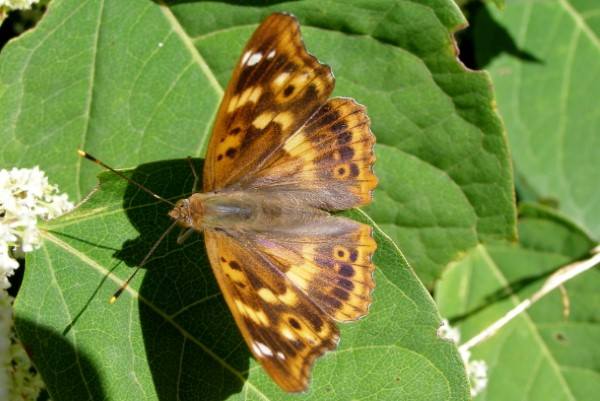
Females of both forms are very similar to the males but have no blue-purple iridescence. Females of form ilia, with black wing backgrounds, can be distinguished from Southern White Admirals by the presence of the orange-ringed eyespot on their hindwings.
In hot weather these butterflies spend most of the time high up in the tree canopy, making photography almost impossible; however, they do sometimes come down and congregate to drink water from patches of damp riverside sand and moist animal excrement.
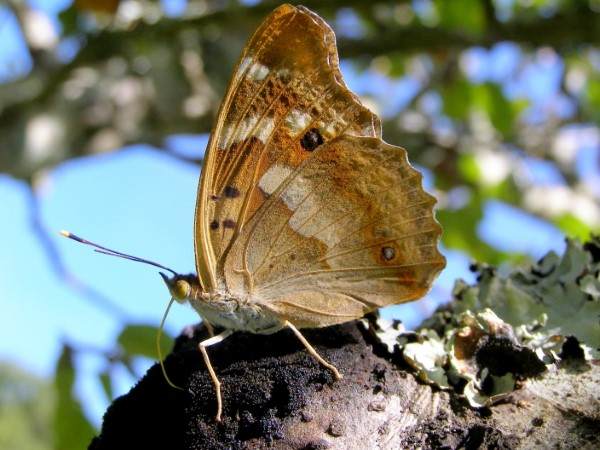
As seen in the picture above, Lesser Purple Emperors sometimes feed on sap emerging from damaged bark of their larval host plants.
Distribution
This lovely butterfly is not native to Britain and is not known to come in as a vagrant. Its range on mainland Europe includes northern Portugal, Northern Spain, France, southern Germany and across northern Italy to the Balkans and Greece. It is absent from southern Italy and the Mediterranean islands.
Habitat
This is a butterfly of broad-leaved woods and forests, where it can bee seen in clearings and along tracks that are bordered by willows and poplars. Lesser Purple Emperors also occur in wooded valleys, where they are attracted to riverbanks that are lined by willows.
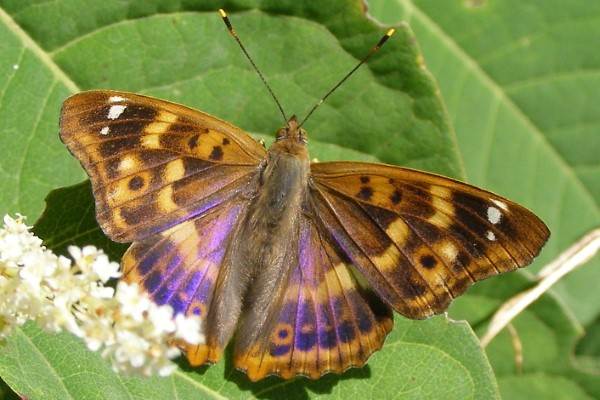
Lifecycle
Depending on location, the Lesser Purple Emperor is either univoltine and seen on the wing between late May and July, or bivoltine and seen on the wing between June and early September. The larval food plants are various poplars and willows, notably Populus tremula, Populus alba and Populus nigra as well as Salix alba and Salix caprea. The females lay their eggs singly on the uppersides of the leaves of host trees, and this species overwinters as young larvae.
Studying butterflies and moths...
Acknowledgements
This page includes pictures kindly contributed by Steve Jelf.
Excited by rivers and streams? So are we, and we're pretty sure you would find the Winding River Mystery trilogy of action-packed thrillers gripping reading too. Dead Drift, Dead Cert, and Dead End are Pat O'Reilly's latest river-based novels, and now they are available in ebook format. Full details on our website here...
Buy each volume in ebook format for only £2.47 on Amazon... Paperbacks also available on Amazon at £6.95 each. All proceeds go towards keeping the First Nature website online.
Please Help Us: If you have found this information interesting and useful, please consider helping to keep First Nature online by making a small donation towards the web hosting and internet costs.
Any donations over and above the essential running costs will help support the conservation work of Plantlife, the Rivers Trust and charitable botanic gardens - as do author royalties and publisher proceeds from books by Pat and Sue.